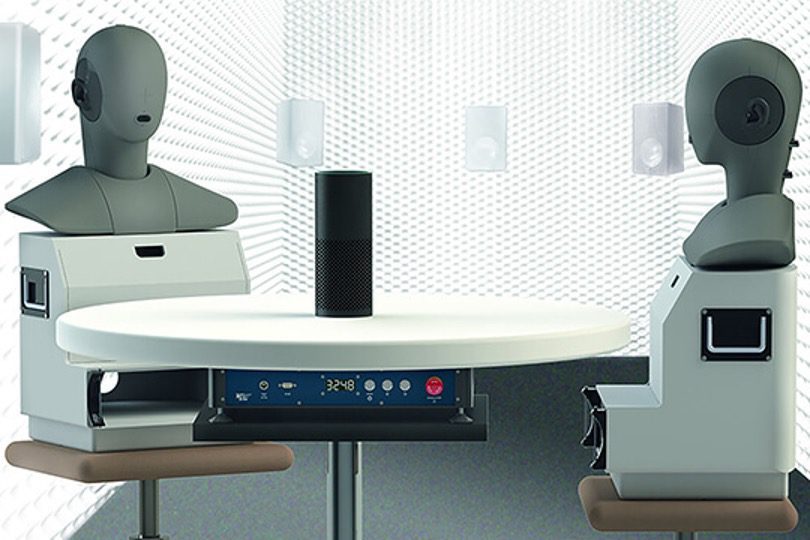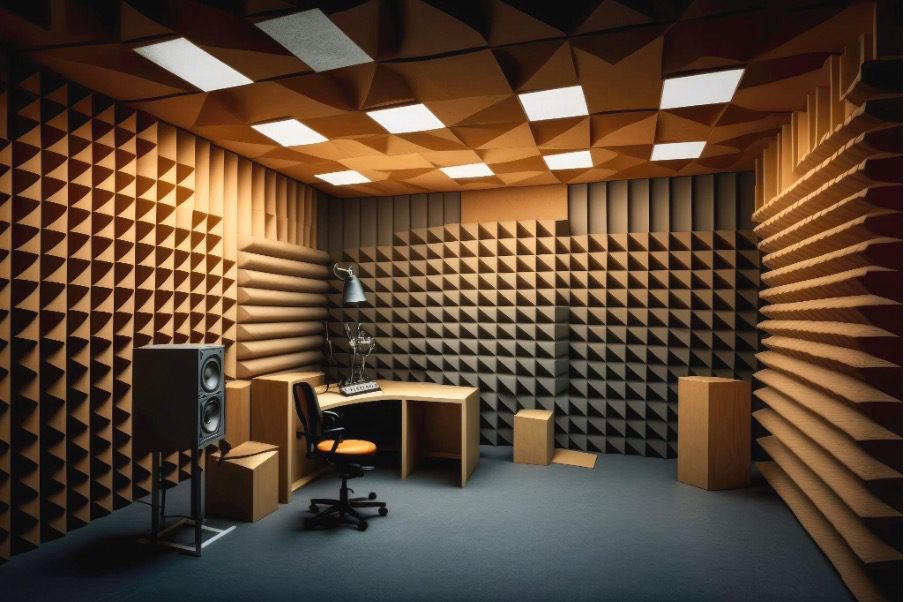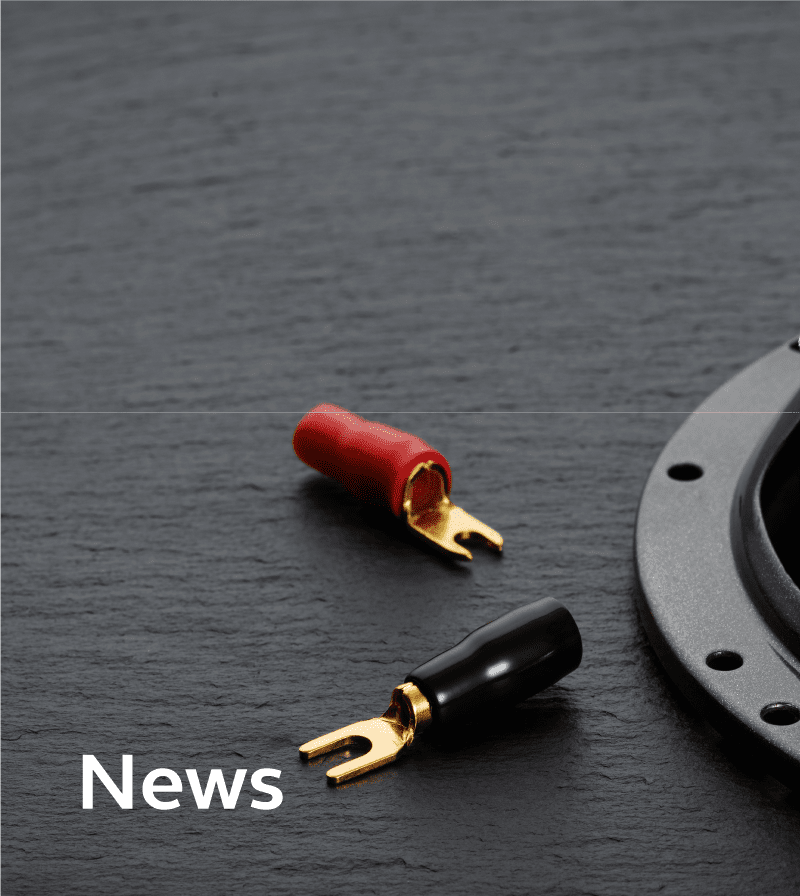When it comes to engineering or engineers, it’s easy for people to immediately associate them with software engineers in Silicon Valley earning million-dollar salaries or with electromechanical integration engineers developing new energy vehicles. It always gives the impression that they are at the cutting edge of the era, as if they are shaping a world for you and influencing this world.
But did you know that those audio devices that you use every day, which allow you to praise their excellent sound quality, also require precise engineering design and have engineers behind them? What they do is called “Audio Engineering.” They also lead you into a world of enjoyable sound, creating an excellent auditory experience for you.
“Audio Engineering” is everywhere, especially in the era of 5G mobile networks, streaming video, and high-quality audio files. It is commonly applied in movies, music, games, live events, and even used by amateur enthusiasts to build their creative platforms. Its effects can make people feel like they are part of the experience, immersed in high-quality audio experiences. As a result, top global companies are vying to invest in this lesser-known but highly influential field of audio engineering, aiming for authentic and beautiful sound and seeking to make users truly say, “Wow!”
However, while major audio engineering companies are capable of doing it, not all of them excel at it because there are at least “five major challenges” that are difficult to overcome. These challenges also serve as technological barriers that only top audio companies possess.

Noise Reduction Technology: It's all about clean sound!
Whether the sound is clean or not, it relies on noise reduction technology.
Annoying environmental noises like “hissing” or “buzzing” can be bothersome, right? Indeed, they can significantly degrade the audio quality during recording, making them the primary culprits in audio engineering failures.
When it comes to noise reduction technology, Active Noise 取消lation (ANC) is a common method. Its principle revolves around targeting the “noise source sound waves” and introducing an additional set of “anti-noise sound waves” to neutralize and cancel each other out. Compared to passive noise reduction, active noise cancellation performs better in the low-frequency domain and allows for selective suppression of specific noise.
Another approach is multiband noise reduction, where audio engineers analyze the frequency spectrum of the audio material and focus on eliminating “specific noise frequency bands” while preserving other audio content.
Additionally, sophisticated algorithms such as spectral subtraction and adaptive filtering can be employed to handle complex signal compositions, reducing noise while maintaining the integrity of the audio.
In summary, noise reduction technology plays a crucial role in ensuring the cleanliness of sound.
Balancing and Mixing: Allowing Multiple Audio to Harmonize and Shine Individually.
In commercial or creative audio productions, there are two factors that influence the success or failure of audio engineering and production: “balancing” and “mixing.” Mixing encompasses the combination of multiple audio tracks, volume adjustments, and other related processing techniques.
In audio engineering, achieving harmony in a multilayered audio track relies on the use of an equalizer (EQ) and frequency carving. For example, when 工作ing on music production or audio mixing, multiple audio elements such as different instruments or vocal tracks are utilized, and each of these elements occupies its own frequency range. However, often these frequency ranges overlap, resulting in conflicts in the frequency spectrum and causing mixing failures.
For instance, in a mix involving both guitar and vocals, if both have high-frequency content, it can sound overly sharp. By using EQ, it is possible to reduce the high frequencies of the guitar and adjust the low frequencies of the vocals, creating a balanced and pleasant auditory experience where each element has its own “space” and can be heard clearly.
Moreover, achieving overall volume balance can be accomplished through Dynamic Range Control Techniques. Compression, for example, allows softer sounds to be heard while preventing distortion of louder audio elements. Limiting, on the other hand, is an enhanced form of compression that restricts the maximum volume of the audio, effectively suppressing excessive volume fluctuations or extreme high levels.
Furthermore, panning can be utilized to control the placement of different sounds in the left and right channels or in a surround sound field, creating a sense of spatial positioning in the soundstage and providing users with a more immersive experience.
Overall, balancing and mixing techniques play a crucial role in harmonizing and allowing individual audio elements to shine in audio production, resulting in a cohesive and enjoyable listening experience.
Indoor Acoustics and Audio Monitoring: Empowering Your Ears
The indoor acoustics of audio engineering are crucial factors that influence the quality of auditory experience. Excessive reverberation or soundwave resonance can add unnecessary coloration and inconsistency to the audio. To accurately present the authenticity of audio, the following “audio environment optimization” and “spatial acoustic processing” measures can be taken:
- Diffusers: Used to scatter sound reflections.
- Absorbers: Used to reduce unwanted reflections.
- Bass traps: Used to alleviate low-frequency resonance.
Additionally, using accurate audio monitoring systems can reduce issues with audio quality. For example, using high-quality speakers and headphones to assist in evaluating and monitoring audio quality and regularly calibrating audio monitoring systems to discern the quality of audio. This helps in making informed decisions during the mixing and post-production stages.

Audio Sync and Lip Sync: Key Elements in Post-Production
Audio Sync, in audiovisual productions such as television and movies, refers to ensuring the synchronization of audio (hearing) and video (visual) elements. Lip sync, in particular, is closely scrutinized. In audio engineering, one effective solution for addressing audio and lip sync issues is to use specialized software tools to align audio and video tracks. These tools allow audio engineers to precisely control audio delays, achieving synchronization between sound and visuals.
Moreover, effective communication between audio and video teams and other production team members during the pre-production phase in audiovisual production can greatly help in avoiding problems during post-production. By understanding and focusing on project requirements, audio sync, and lip sync, the team can prevent the need for time-consuming corrections later on. The concept of prevention being better than cure is vital, and the real core elements lie in the project team’s control over requirements, understanding of audio and lip sync, and accurate focus on needs.
Spatial Audio Compatibility: Working on Every Device
In recent years, spatial audio technology has offered immersive experiences far beyond traditional stereo effects, making it increasingly popular. However, implementing spatial audio is quite complex, and creating an immersive soundscape requires consideration of compatibility with different platforms and playback systems, which can be quite challenging for audio engineering novices.
Spatial audio goes beyond traditional stereo effects, allowing listeners to feel as if they are truly present in the scene. For example, we can perceive sound coming from different directions or surrounding us as if we were in the actual location. This kind of audio experience is commonly used in movie theaters, home theaters, and games, creating a more realistic feeling for the audience. Hence, audio engineers need to utilize special techniques and formats such as Ambisonics and binaural rendering to capture or set the position and direction of audio in three-dimensional space.
However, even more complex is the need for audio engineers to ensure spatial audio compatibility across various media platforms and playback systems. Currently, the most commonly used spatial audio format is Dolby Atmos, which can be found in movie theaters, home entertainment systems, and headphones, among others.
Audio engineering requires consideration from the inside out
Overall, audio quality covers a wide range of audio engineering aspects, from internal aspects such as “noise reduction” and further “balancing and mixing,” to external factors such as “indoor acoustics and audio monitoring” and “audio sync and lip sync” during post-production, all the way to considering “spatial audio compatibility” on different devices.
With the integration and assistance of technology, audio applications are becoming more diverse and sophisticated. By harnessing the power of technology in these five different stages of audio engineering, we can achieve immersive experiences while empowering audio engineering with technological advancements, using the simplest methods to deliver the best sound quality.




